Traveling to Europe: How to Plan Your First Trip (+21 Tips & Tricks)

This site contains affiliate links, which means that we may earn a small commission, at no cost to you, for qualifying purchases. It supports the work that goes into keeping this content free. Thanks for reading! More info: Privacy Policy.
Thinking of traveling to Europe for the first time, but not sure where to start with the preparations for your dream vacation? Where and when to go, how much time you need, and how to make a European trip itinerary without getting overwhelmed… In this guide, you’ll find our expert tips for planning your first trip to Europe!
Dreaming of seeing Europe’s top attractions, standing at the top of the Eiffel Tower, hiking in the Alps, or exploring the cobblestone streets of charming European towns? Indeed, a trip to Europe is the perfect opportunity to immerse yourself in centuries-old history, discover different cultures, marvel at some of the most beautiful landscapes, and enjoy delicious food.
However, Europe is big and extremely diverse. With dozens of countries, each with different languages and traditions, and innumerable places of interest, planning a European vacation might seem absolutely overwhelming.
How do you even start planning a trip to Europe?
Let’s be honest – there is not one simple answer and no two trips to Europe will ever be the same. But I am confident that our tips will help you get the most out of your trip and make it truly enjoyable instead of overwhelming.
Good to know: We live in Europe, have traveled across the continent for decades, and have planned countless trips and itineraries for different regions and in all seasons. In this article, we’ll walk you through some essential steps to help you plan your own unforgettable journey across the Old Continent. Find out!
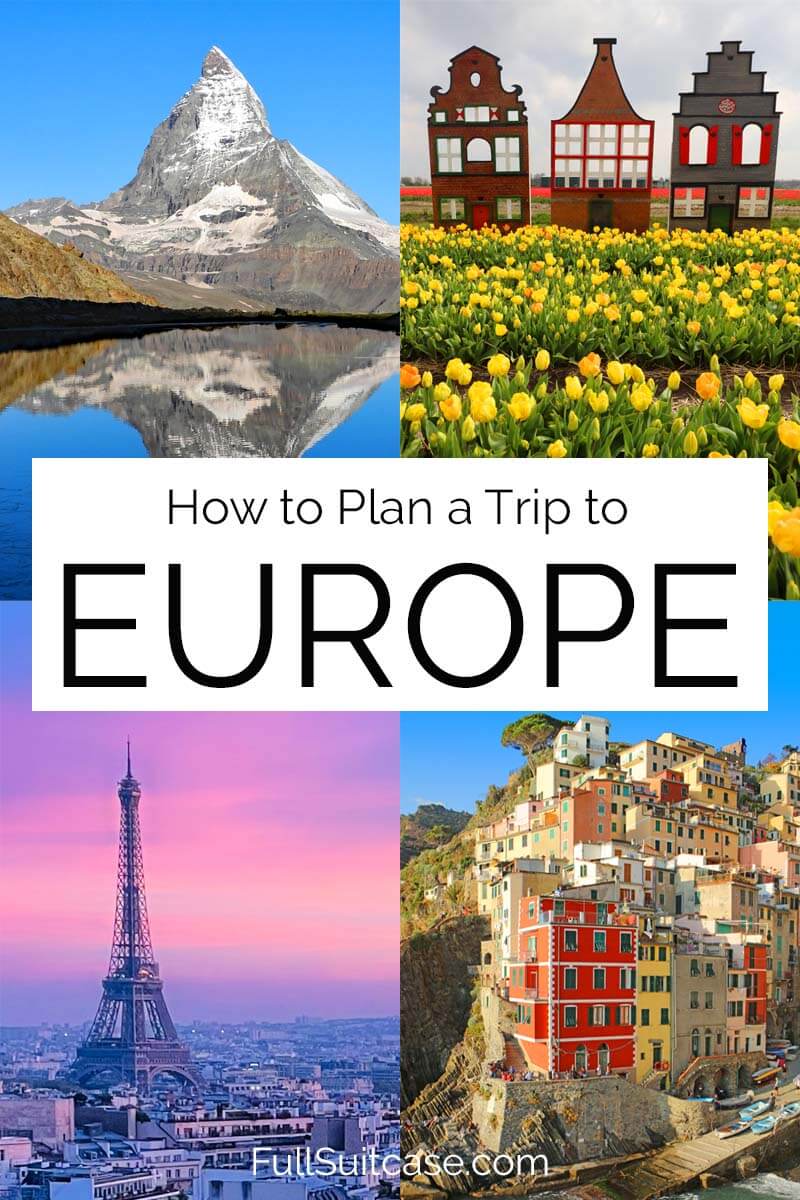
Here are some essential steps and tips for planning a trip to Europe:
1. Decide When You’ll Travel
Before starting to plan a trip to Europe, decide WHEN you will travel. The season might influence where to travel in Europe and what to do there.
While for certain destinations the season doesn’t matter that much, there are many others where summer travel will give you a totally different experience than visiting in winter.
For example, if you are visiting Europe in the summer and want to do lots of sightseeing, you may prefer to avoid the biggest cities in the south where the temperatures often are way too hot for exploring. Whereas if you are interested in beaches or hiking in the Alps, summer is the perfect time to travel.
Also when planning a trip to the mountains or other nature destinations, the season is really important. Some places can only be visited in the summer months, and some experiences can only be had in the winter… But there are also many iconic mountain destinations like e.g. Mt Titlis or Zermatt in Switzerland that can be visited the whole year round.
It all seems pretty logical, but you’d be surprised at how often we get questions from readers about seeing the Northern Lights in Iceland in the summer, or hiking in the Italian Dolomites and visiting the Dutch tulip fields in the fall or even winter…
TIP: If you can, avoid traveling to the most popular places in Europe in the peak summer season (July – August) and major school holidays (Easter and Christmas-New Year). Not only it will be less busy everywhere, but you’ll also save money on flights and accommodations.
However, keep in mind that some destinations are always popular and some places also have their own peak seasons (e.g. Venice during the Carnival, German cities during the Christmas Market season, or popular Swiss ski resorts in February-March, etc.).
READ ALSO: Best Time to Visit Europe (+ Where to Go in Which Season)

2. Determine the Duration of Your Trip
Deciding HOW LONG you’ll spend in Europe is crucial. You cannot start planning a trip without having a very good idea of how much time you’ll have for it.
If you are traveling to Europe for the first time, a two-week trip is often a good starting point. It allows you to explore multiple European cities without feeling rushed.
Of course, three or four weeks will be better as you will be able to cover more of Europe. But if you wait until you have that much vacation time, you may never travel at all… So see what works for you and make the most of it!
Remember that no matter how much time you have, you’ll never be able to see all of Europe anyway. You can spend 2-3 weeks in any country alone and still just scratch the surface. Or you can have a nice European trip in just 10-14 days, see several major cities, and go home feeling perfectly happy that you ticked off some of those iconic bucket list destinations…
It’s not the duration of your trip that will determine how enjoyable it is, but how you plan your time. See below for some tips!
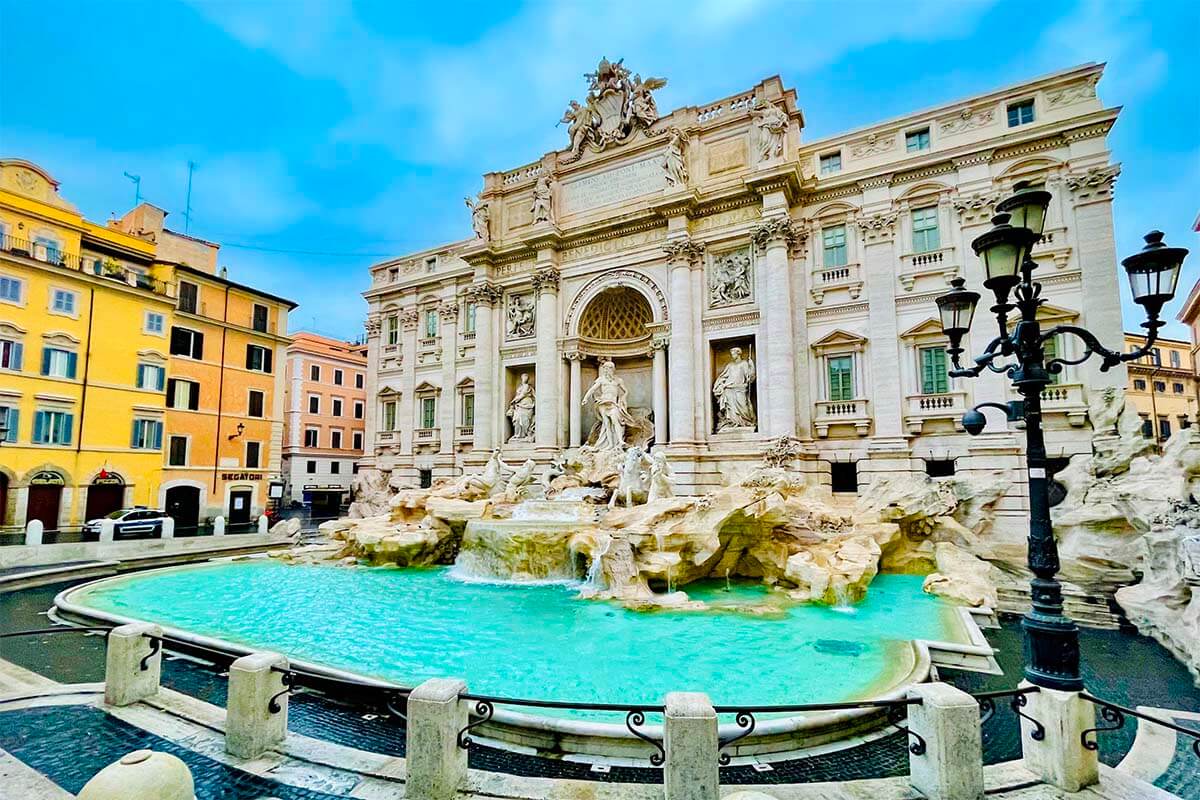
3. Choose Your Destinations Wisely
Now it’s time to decide WHERE to go.
As already mentioned, “Europe” is not one destination. There are 27 countries in the European Union and 44 countries in the continent of Europe (and even more depending on how you count, but let’s not get into politics).
There is simply no way to see “everything” in Europe in one, two, or even a dozen trips. So you have to choose your destination/s wisely.
Start by making a list of your dream places that you’ve always wanted to visit. Consider their location and the season, as already mentioned above. Remember that you are traveling for yourself and you don’t absolutely have to see all of the most beautiful churches in Italy or the best museums in Amsterdam if they don’t interest you. Well, you may want to see one or two, but only if that’s what you want…
In the end, it’s your personal wishlist that should determine where to travel in Europe and not someone else’s ‘must-sees’.
Decide whether you’ll just concentrate on the main cities or will also spend a bit more time traveling around in each country. Do you prefer to explore just one or two countries deeper or do you absolutely want to cover as much ground as feasible? There are so many ways to plan a trip to Europe…
TIP: No matter which destinations you decide to visit, we highly recommend choosing a mix of cities, smaller towns, and also some nature destinations if possible. This will not only make your trip more relaxing and enjoyable, but you will also get a much better idea of how diverse and beautiful Europe really is.
TRAVEL INSPIRATION: Europe’s Fairytale Destinations

4. Don’t Overdo It
Many first-time visitors to Europe focus on the major (capital) cities and travel to a new country every few days. Just do yourself a favor and don’t overdo it!
While it might be tempting to pack in as much as you possibly can, visiting a different country every day will leave you overwhelmed and exhausted.
Yes, you can see some of the main landmarks of London in a day, take a train to Amsterdam and Paris, and fly over to Rome, Barcelona, or Athens in the same week, but you’ll spend more time at the airports and railway stations than sightseeing…
TIP: Don’t try to cover too many countries and different regions in too little time, especially if you only have 1-2 weeks in Europe. Instead, focus on your bucket list and make sure that you make the best use of your time.
Also, take into account travel times between different places. While you only need 2-3 hours to travel between the center of London and Paris or Brussels by train, you’ll spend more than half a day flying from London or Paris to Athens or Barcelona (don’t forget the time you need to get to the airport, etc.), and you’ll need at least a few days for just one destination if you decide to visit places like Iceland, Faroe Islands, Sicily, or Madeira.
Luckily, with some good planning, you can see a lot of Europe while still keeping it enjoyable. For that, it’s very important to prepare a good itinerary. See below for some tips.

5. Prepare a Rough Itinerary
Once you have figured out the season, the duration of your trip, and some of the must-sees, it’s time to make an itinerary.
This is probably the most important step in the entire process of planning a trip to Europe! If you do it right, you’ll have a fun and fulfilling trip. Pack in too much or not think things through, and your vacation might get ruined… So take your time and be sure that all the puzzle pieces fit together.
Here are some tips:
- Decide on the airports you will fly in and out of.
- Don’t forget to account for travel days and time differences when planning your trip! If you are traveling from the US to Europe, you’ll likely arrive here a day later, plus, you have to account for the jet lag. See this guide for our experience-based tips for dealing with jet lag.
- Keep in mind that travel time can add up due to unforeseen circumstances, so factor in some extra time for transportation. Flights get delayed, trains don’t always run as planned, traffic can be a mess, and you really don’t want to miss something important because your itinerary is too tight.
- Create a rough itinerary outlining the main cities, the number of days you’ll spend in each area, and key attractions you don’t want to miss.
- Opt for a mix of iconic destinations and hidden gems to create a well-rounded experience. Also, balance your schedule between sightseeing and some relaxation, and make sure to always leave at least some time for some unexpected discoveries and spontaneous exploration.
Planning an itinerary for any trip is easier said than done, and I realize that. After all, you can see some of the main landmarks of any place in a day or two, but you can also spend a week and still leave with a feeling that you could have stayed longer…
As long as you don’t try to squeeze in four days worth of sightseeing in one or two days, you’ll be fine. For that, focus on what’s important to you, plan well, and let go of the rest. Remember, you can’t see “everything” anyway, so don’t let the fear of missing out ruin your experience.
TIP: It’s better to see fewer attractions and truly enjoy them than run around like a headless chicken and constantly stress about the next item on your itinerary rather than enjoy the moment.

Sample European itineraries for 2-3 weeks
Since the majority of people planning their first trip to Europe are mostly interested in the most iconic landmarks in the main cities, we created a few very rough and rather packed itineraries to show you what’s possible.
Please remember that these are just meant to give you an idea of how you could plan a trip to Europe focusing mostly on the most popular destinations.
There are thousands of ways to plan a European trip (and also much more to see beyond London, Paris, or Rome), so you can ignore these altogether and prepare your own perfect itinerary visiting the places that appeal to you the most.
2 weeks in Europe:
- Day 1: Flight to Amsterdam. Days 2-3: Amsterdam. Day 4: Train to Brussels or Antwerp. Day 5: Day trip to Bruges. Day 6: Train to Paris. Days 7-8-9: Paris. Day 10: Train to London. Days 11-12-13-14: London.
- Day 1: Flight to Rome. Days 2-3: Rome. Day 4: Train to Florence. Day 5: Florence or a day trip to Cinque Terre. Day 6: Train to Venice. Day 7: Venice and flight to Paris. Days 8-9-10: Paris. Day 11: Train to London. Days 12-13-14: London.
- Day 1: Flight to London. Days 2-3 London. Day 4: Train to Brussels. Day 5: Day trip to Bruges or Antwerp. Day 6: Train to Paris. Days 7-8-9: Paris. Day 10: Flight to Venice or Florence. Day 11: Venice or Florence. Day 12: Train to Rome. Days 13-14: Rome.
- Day 1: Flight to Barcelona or Lisbon. Days 2-3: Barcelona or Lisbon. Day 4: Flight to Rome. Days 5-6: Rome. Day 7: Flight to Paris. Days 8-9-10: Paris. Day 11: Train to London. Days 12-13-14: London.
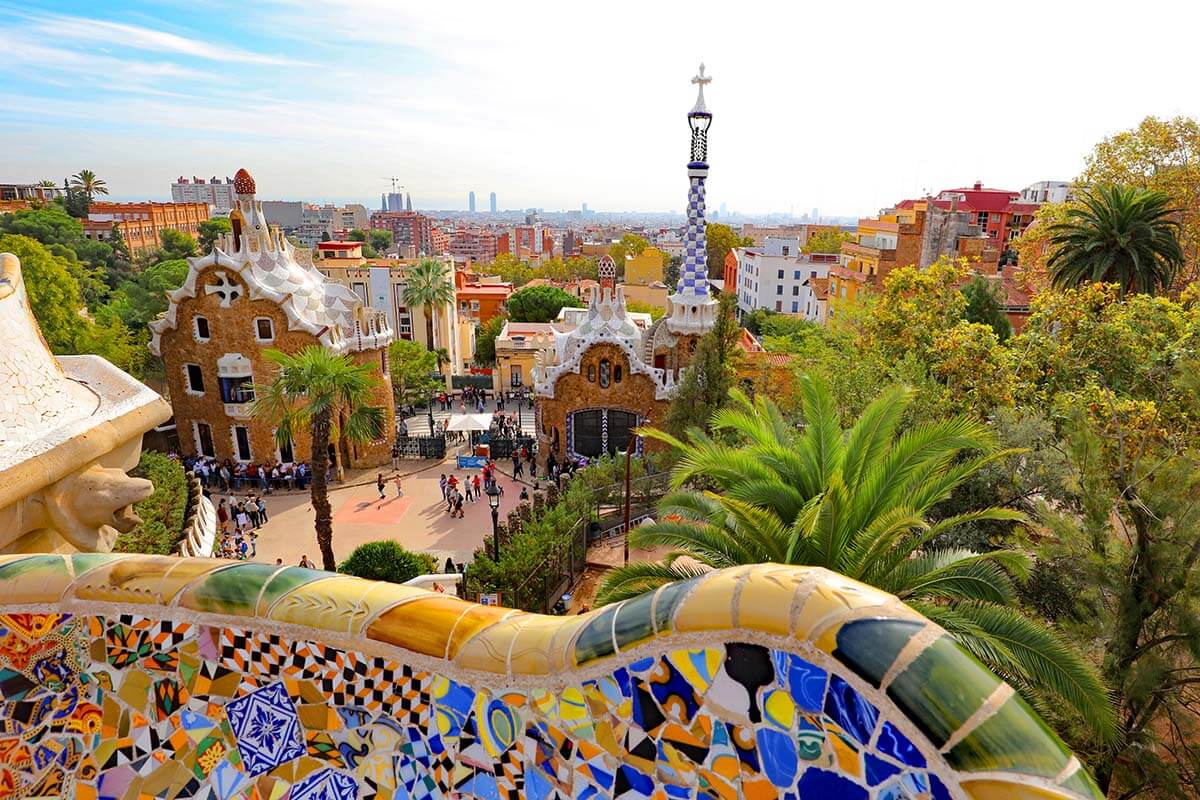
3 weeks in Europe:
- Day 1: Flight to Rome. Days 2-3: Rome. Day 4: Train to Florence. Day 5: Florence or a day trip nearby. Day 6: Train to Verona. Day 7: Day trip to Venice. Day 8: Train to Milan. Day 9: Day trip to Lake Como. Day 10: Flight to Amsterdam. Day 11-12: Amsterdam. Day 13: Train to Brussels or Antwerp. Day 14: Day trip to Bruges. Day 15: Train to Paris. Days 16-17-18: Paris. Day 19: Train to London. Days 20-21: London.
- Day 1: Flight to Lisbon. Days 2-3: Lisbon. Day 4: Flight to Barcelona. Days 5-6: Barcelona. Day 7: Flight to Naples. Days 8-9: Capri and Amalfi Coast. Day 10: Train to Rome. Days 11-12-13: Rome. Day 14: Train to Florence. Day 15: Florence or a day trip nearby. Day 16: Train to Venice. Day 17: Venice. Day 18: Flight to Paris or London. Days 19-20-21: Pari or London (or even both by train).
- Day 1: Flight to London. Days 2-3-4 London. Day 5: Train to Amsterdam. Days 6-7: Amsterdam. Day 8: Train to Bruges. Day 9: Train to Paris. Days 10-11-12: Paris. Day 13: Train to Strasbourg. Day 14: Day trip to the Alsace region. Day 15: Train to Lucerne. Days 16-17-18: Swiss Mountains. Day 19: Train to Milan (via Bernina Express). Days 20-21: Milan & Lake Como.
- Day 1: Flight to Paris, Barcelona, Lisbon, London, or Amsterdam. Days 2-4: In the city of your choice. Day 5: Flight to Rome. Days 6-7: Rome. Day 8: Train to Florence. Day 9: Florence or a day trip nearby. Day 10: Train to Venice. Day 11: Venice. Days 12-13-14: Italian Dolomites & Lake Garda (rent a car). Day 15: Milan (return a car). Day 16: Lake Como day trip from Milan. Day 17: Train to Lugano. Day 18: Train to Lucerne (via Bernina Express). Days 19-20-21: Swiss Mountains.
Further below, you’ll find very detailed itineraries for some of the most popular destinations in Europe. But first, documents, transportation, and money matters – see below.
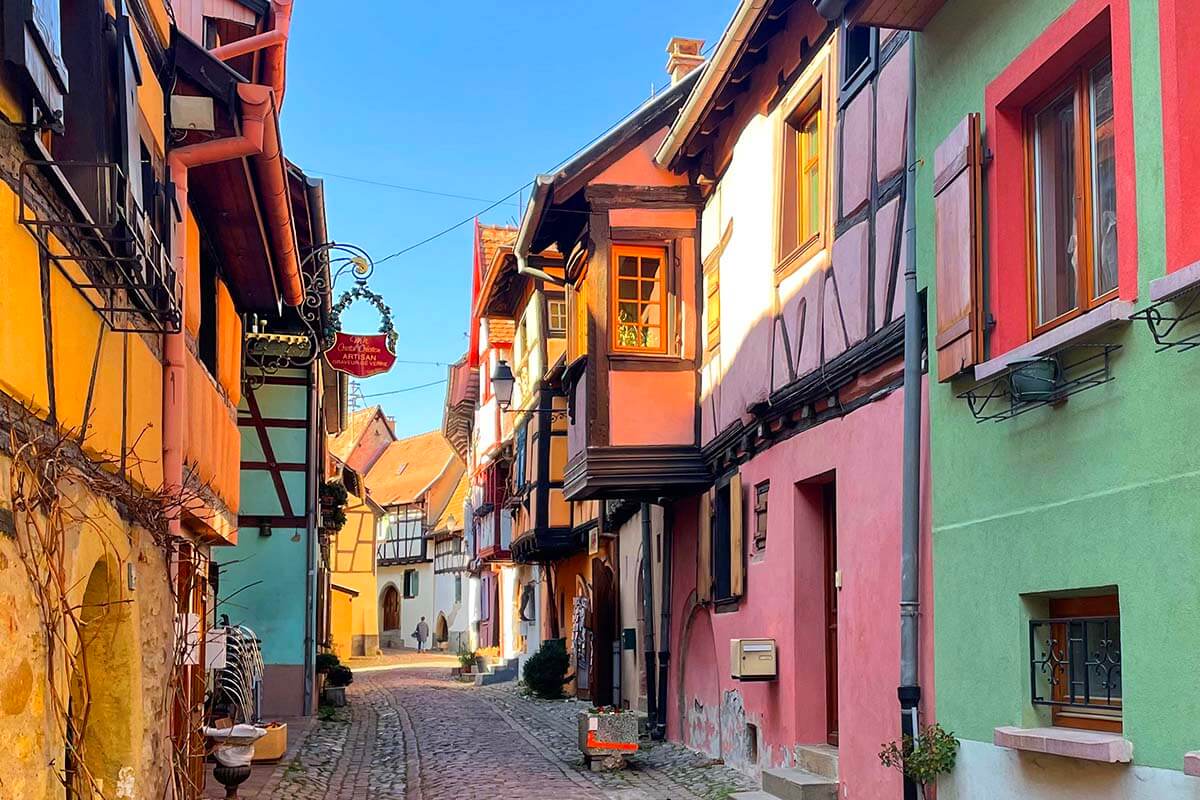
6. Check What Kind of Travel Documents You Need
Depending on where you live, which nationality you have, and which European countries you are planning to visit, you may need different travel documents. It’s very important that you do your own research for that!
As a minimum, if traveling from abroad (like the USA), you will need an international travel passport (make sure your passport is valid for at least 6 months beyond your planned return date!). In some cases, you may need a visa or an electronic travel authorization.
It’s also important to understand that many European countries are in the Schengen Zone which means that once you arrive in one country, you can freely travel around to other places without any additional documents. However, not all of Europe falls under this agreement.
For example, most EU countries are in the Schengen Area but not Ireland, Cyprus, Romania, or Bulgaria. Whereas Switzerland, Iceland, Norway, and Lichtenstein are not in the EU, but are part of the Schengen Zone. The UK is not part of the Schengen Zone.
Good to know: Starting from 2025, travelers from visa-exempt countries (also from the USA) will be required to have travel authorization to enter most European countries. It’s called ETIAS and you can find all the information about it on the official website. It is very similar to the ESTA system that Europeans have to use when visiting the USA. Basically, you have to fill in an online form and provide some travel information before your trip.
However, the ETIAS project has been postponed time and again, so it’s not clear when this travel authorization will finally be introduced. At the moment of the last update to this article, they have pushed the dates once again.
TIP: Use official sources such as government websites when researching which travel documents you need. Also, remember, that it’s often very simple (and cheap) to apply for any documents online by yourself, so don’t get tricked by all kinds of online visa services.
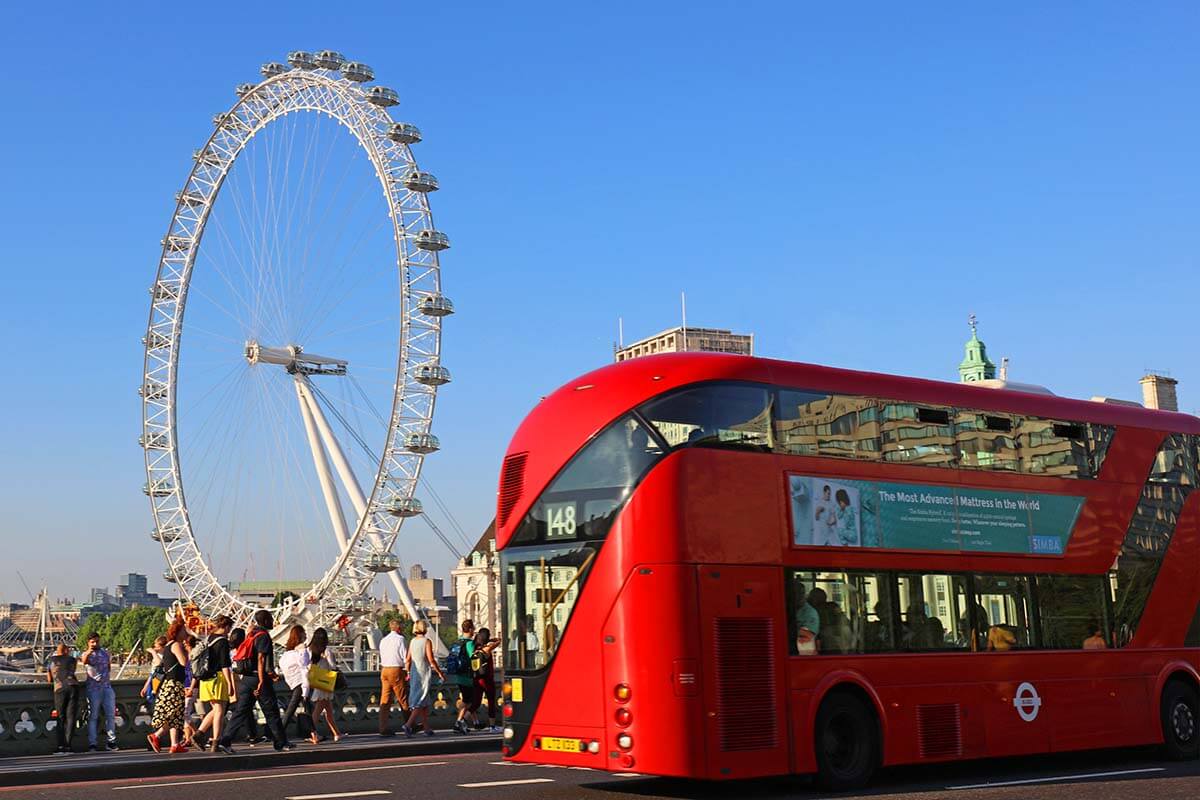
7. Research Long-Haul Flights
Once you have a rough itinerary, it’s time to research the best flight options to Europe and back.
Here are some tips:
- Search for flight deals well in advance to secure affordable fares.
- Consider open-jaw flights (flying into one city and departing from another) to optimize your sightseeing time.
- Research flight options to/from alternative airports. It might be cheaper to start or end at another airport than the one you originally planned. Sometimes, a few simple changes like that can save you a lot of money.
- There are many websites that you can use to research the best flight options. We use Skyscanner, Momondo, Google Flights, and often also directly with our favorite airlines.
TIP: Some airlines offer free stopovers at their hub destination, which might enable you to visit an additional country/city at no extra cost. For example, Icelandair often has good deals that give you some time to explore Iceland on the way to continental Europe. Also, TAP Portugal sometimes has a good deal for a stopover in Lisbon. These are just a few examples, just to show you that there are more options than you may think of.

8. Make a Realistic Budget
Traveling to Europe from overseas might be very pricey, so be sure to make a realistic budget for your trip. Keep in mind that the biggest cost of your trip to Europe will likely not be the transatlantic flight, but accommodations and meals. We’re always surprised how quickly the costs of dining out can add up on a longer trip.
Also, don’t let the prices scare you off. With some careful planning and research, you may be able to do that dream trip for much less than you think.
You might simply have to make some adjustments to your itinerary or choose an alternative mode of transportation or accommodation to make it work. You can also save a lot of money by opting for a picnic or a simple local snack for lunch rather than dining at a restaurant twice a day.
Good to know: Please don’t ask me how much your trip to Europe will cost. I get this question for so many destinations time and again, and my answer is always the same. It depends on so many factors, such as when you travel, how long in advance you book, if you can get any special deals for the flights, which hotels you choose (and how many people share the room), which attractions you visit, where you dine, etc.
You can make any trip as expensive or as cheap as you like, so it all depends on your choices.

Here are some tips to make your European trip more affordable:
- Start planning (and book!) well ahead, ideally at least 6 months before your trip, for some destinations/seasons even earlier. The earlier you book, the more choice you have in all budgets.
- Limit the number of destinations you visit. Staying in one place longer is usually much more affordable than traveling to a different place every couple of days. Not only will you save on transportation, but many cities/regions in Europe also have multi-day cards which can save you a lot of money on sightseeing. Most of these cards are only really worth it if you stay in the same place for at least 2-3 days and offer the best value on longer stays like 4-7 days.
- For longer travel distances within Europe, check if there are budget airlines operating the route that you need. Some of the most popular budget airlines in Europe include Ryanair, EasyJet, Wizzair, Vueling, Transavia, Norwegian, and several others. If your budget is tighter, you may also want to consider intercity buses, also for international routes.
- Opt for lesser-known places or cheaper countries in Europe. For example, your money will stretch much further in Krakow, Seville, or Lisbon than in London, Amsterdam, or Brussels.
- Choose your restaurants wisely. You can have a perfectly good meal in many places in Europe for 10-15 euros, but it’s not abnormal to pay 30-50 euros for the main dish either. And while you can have a 5-10 euro cocktail in most places, prepare to pay 25-30 euros at the best rooftop bars in Florence…
- Get a good travel credit card before your trip. Some cards allow you to collect points/miles, some others give cashback, etc. You’ll be spending lots of money on your trip anyway, so try to make the most out of it.

9. Research Transportation in Europe
Next, it’s time to research the transportation options within Europe.
There are countless ways to travel around Europe. Depending on your budget, time, and overall itinerary, you may want to fly, take (international) trains, or buses, rent a car, or even opt for some form of overwater transportation or even book a (river) cruise for a few days…
Covering transportation options within Europe would require quite a few extra articles, so here are just a few general tips:
- Don’t fly short distances in Europe (e.g. London to Paris). Often, it’s much more efficient to take a train, even for longer distances, especially if there are high-speed trains available. The train stations are usually located in the city center and you don’t have to arrive hours in advance, which saves a lot of time. Plus, there are fewer baggage restrictions, and the trains are usually cheaper. TIP: You can use websites like Omio to compare all the best transportation options for any route. Or use the official sites of the national railway companies for every country that you plan to visit.
- Don’t rent a car if you don’t absolutely need it (that is if you are mainly visiting cities and big towns). Traffic can be really busy and driving is often stressful and takes more time than public transport. Plus, parking can be expensive and hard to find. And you don’t want to get me started on different toll systems, green zones, and limited traffic zones which are all different in each country and sometimes even in each city… That said, renting a car is often the best way to explore the countryside and see more places a bit off the beaten path, but this is something that most first-time visitors to Europe don’t even consider.
- If you decide to rent a car, only rent it for the days when you need it (so not when you are in major cities). Also, do extensive research if planning to drive through several countries. A lot is possible, of course, but each situation is different. TIP: We always use this website to compare prices and find the best deals for car hire.
- Consider guided day tours for some destinations (e.g. Lake Como from Milan or the Dutch Countryside from Amsterdam). It will save you a hotel change, transportation costs, and lots of stress and hassle while allowing you to maximize the time that you have. We mainly use GetYourGuide to research the best excursion options. Viator is also good for some destinations.
- Most European cities are very walkable and public transport is excellent too. Taxis are available and in many places, you can also use Uber or Bolt. Bike tours are also great if you want to see a lot in a short time.
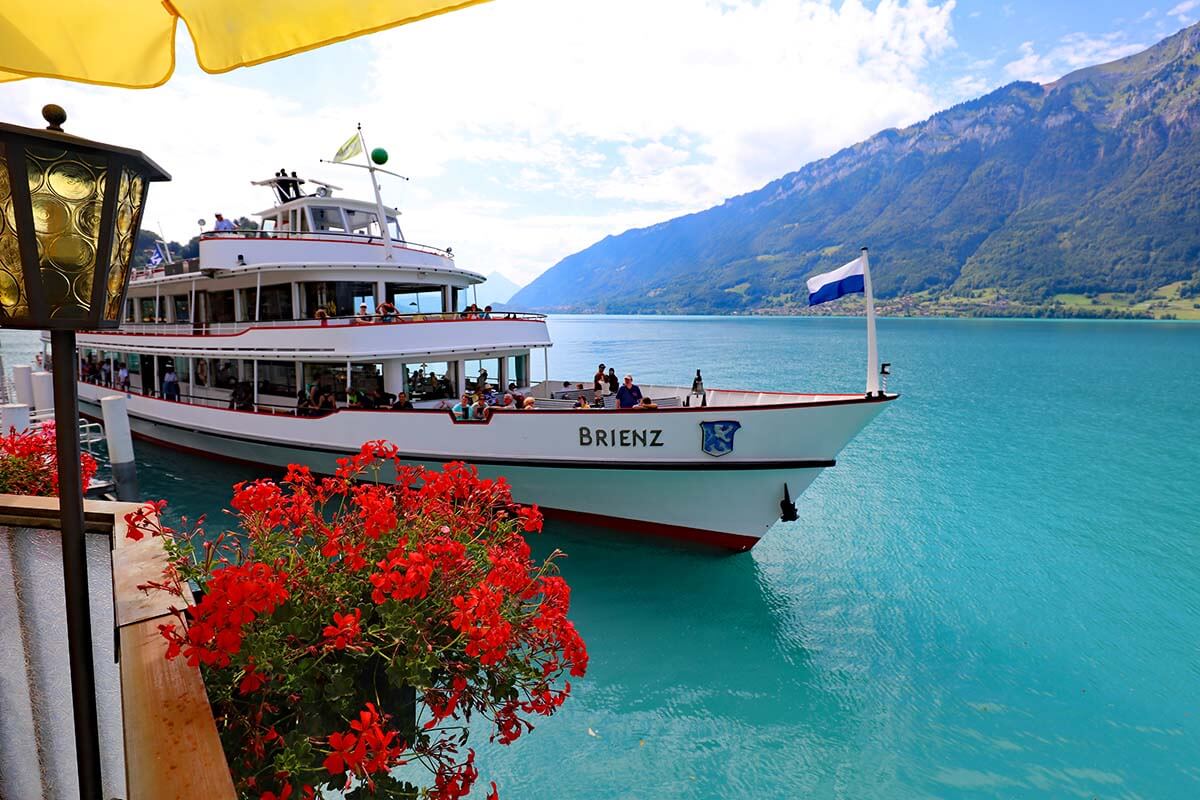
10. Book Your Accommodations
Once you have a rough itinerary and an idea of how you’ll travel around, it’s time to book your accommodations.
Unless you are traveling to Europe for several months with lots of flexibility and without a set itinerary, be sure to book your accommodation as soon as you know your travel dates. The availability at some places is really limited and the prices often skyrocket the closer it gets to the travel date.
Just one example. If you are looking for a hotel in Venice a month before your summer trip, you’ll often find that the cheapest rooms in the city cost $500-700 per night. Whereas if you book ahead, you should find plenty of nice choices at about half that price. Some of our friends recently traveled to Venice and decided to stay outside the city and then take a train because hotels in Venice were simply unaffordable.
When looking for a place to stay, consider the transportation that you’ll use. Often, staying close to the railway station is the best choice, especially if you are only in the city for a day or two. It can save you a lot of time!
TIP: Check Booking.com for your travel dates to get a better idea of availability and prices, and to book your stay. This is by far the most popular accommodation booking website in Europe and you’ll find all types of lodging here: from luxury hotels to hostels, private apartments, villas, etc.
If you are not familiar with it, Booking.com is Europe’s answer to Expedia, Airbnb, Vrbo, and many others all in one place (but often with much better booking conditions and customer service). We use it for all our lodging bookings worldwide, but it’s an absolute #1 in Europe.
Here are some articles that you may find useful:
- Where to stay in London.
- Where to stay in Amsterdam.
- Where to stay in Rome.
- Where to stay in Brussels.
- Where to stay in Antwerp.
- Where to stay in Reykjavik.
- Where to stay in Cinque Terre.
- Where to stay in Lake Como.
- Where to stay in Amalfi Coast.
- Where to stay in Naples.
- Where to stay in Algarve, Portugal.
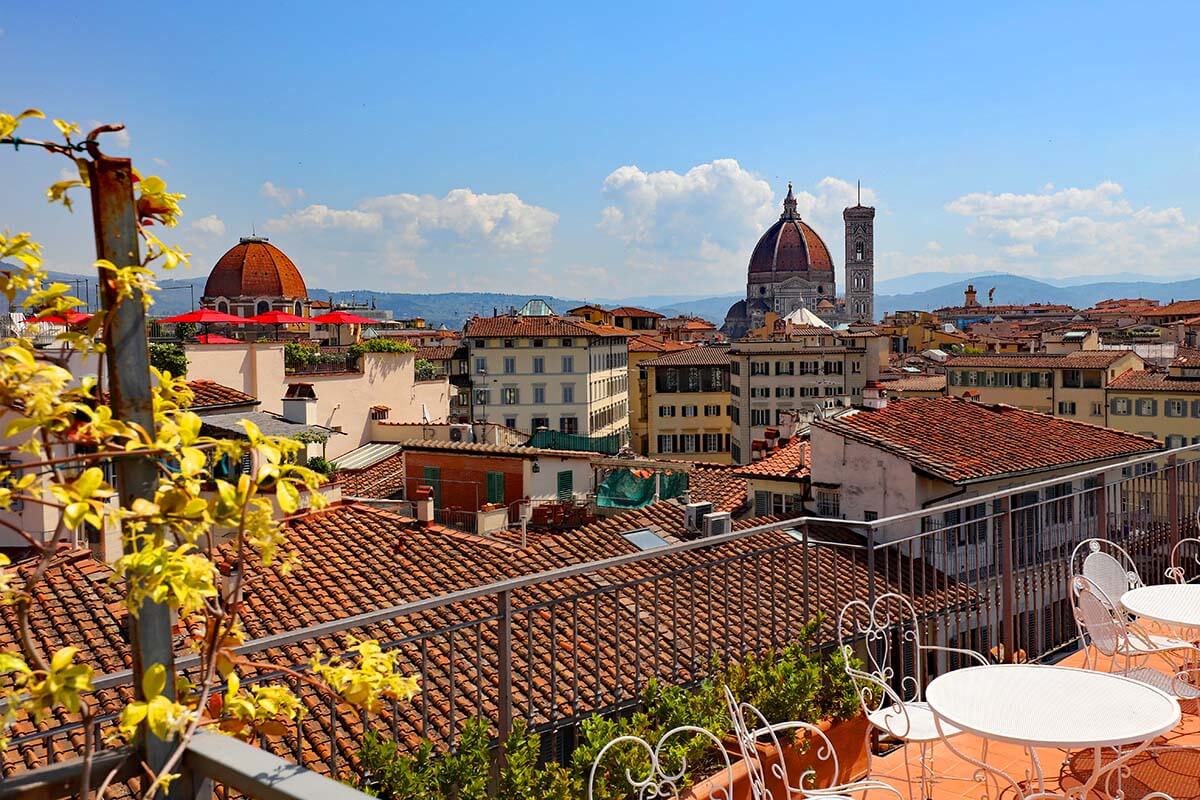
Good to know: Many popular European destinations were forced to introduce all kinds of laws to limit private rentals for short stays because websites like Airbnb have made housing completely unaffordable for locals. Countless articles and books have been written about the devastating impact private rentals had on Europe, especially in major cities like Amsterdam, Barcelona, or Lisbon…
So in order to keep European cities liveable and authentic, please consider resisting the urge to ‘live like a local for a few days’ and simply book a hotel or a hostel. There are also ‘aparthotels’ (apartments with hotel service) if you are traveling with a family and need more space.
That way, you’ll actually contribute to the local economy rather than make the problem worse. Renting a tiny apartment in Paris or Rome will really not make you ‘a traveler and not a tourist’ (no idea who even came up with this absolutely ridiculous distinction). Better be a responsible tourist than an ignorant ‘traveler’.
Of course, you can choose to do whatever feels right for you. And if you are traveling with a big family like we do, sometimes apartments might be the best or even the only option. I just want you to be aware of the problem that led to so many cities and popular areas losing their authentic charm which made those places attractive to tourists to start with (oh, the irony)…
Ok, rant over. 😉
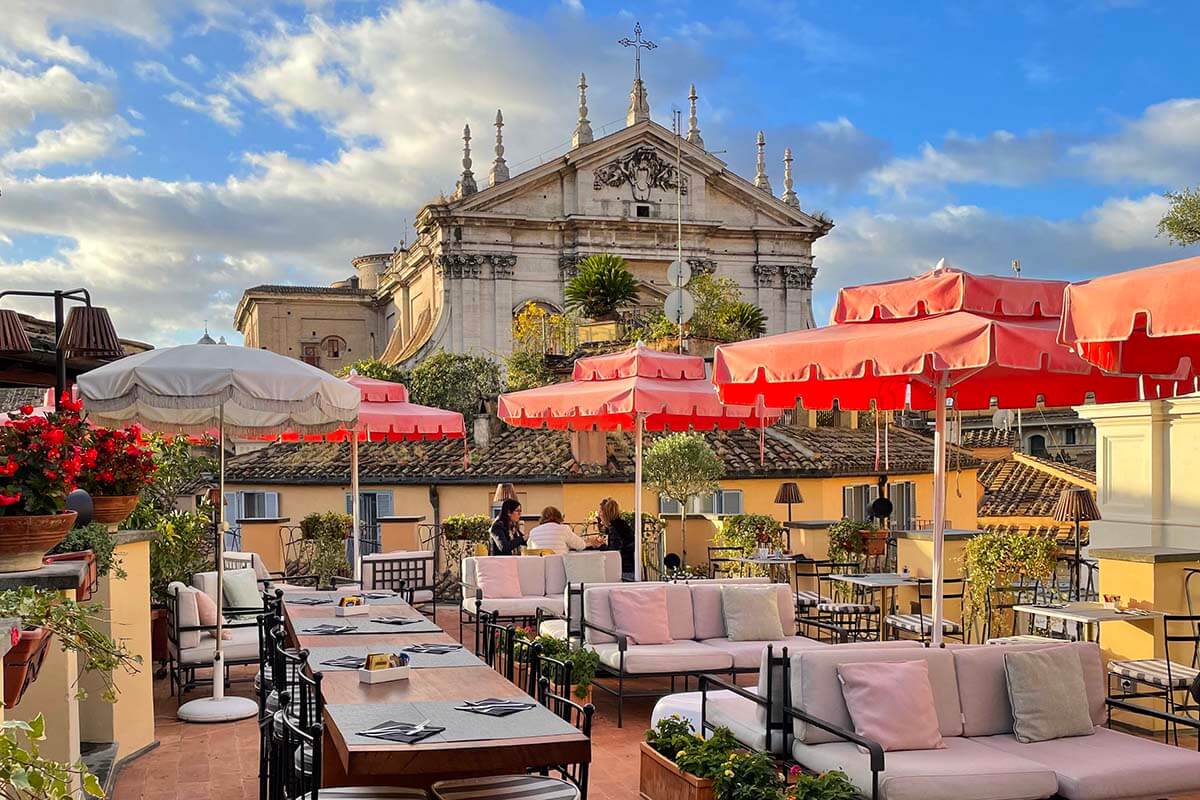
11. Fine-tune Your Itinerary & Book Tickets!
When planning any trip, I always start with flights, accommodations, and transportation, as that makes it easier to plan the rest. Once you know where you’ll be staying and at what time your flights/trains are, you can start looking into sightseeing, booking attraction tickets, and researching day trips, excursions, etc.
Now it’s time to fine-tune your itinerary. This means researching which places you want to visit and making sure that you can do everything in the most efficient way.
TIP: For some places, you may also want to research if city passes or (regional) travel cards make sense and book them in advance. For example, in Switzerland, you may consider the Swiss Travel Pass (an all-in ticket that includes all the public transport and many museums across the country). In Rome, you may want to get the popular Omnia Card, and in Paris – the Paris Museum Pass, etc.
Important! Pretty much any popular tourist attraction in Europe requires advance booking nowadays (even if it’s included with one or the other city pass). If you didn’t think of booking tickets for the Van Gogh Museum in Amsterdam, the Louvre in Paris, or the Colosseum in Rome weeks in advance, it’s very likely that won’t be able to visit at all.
Also, remember that even the most popular attractions often close at least one day of the week, so you may have to move things around to be able to visit a place you really want to see.
For some places, tickets sell out months in advance and for some others, you cannot book more than a few weeks upfront (but have to be quick when the tickets are released). So doing your research in advance is essential!
TIP: Booking as much as possible in advance is the best way to be sure that you will be able to visit all those places from your European bucket list! It will also save you so much stress and make your trip more relaxing.
LEARN MORE: Must-Book Europe Attractions
Below, we have a few examples of how to fine-tune your itinerary. Read on!
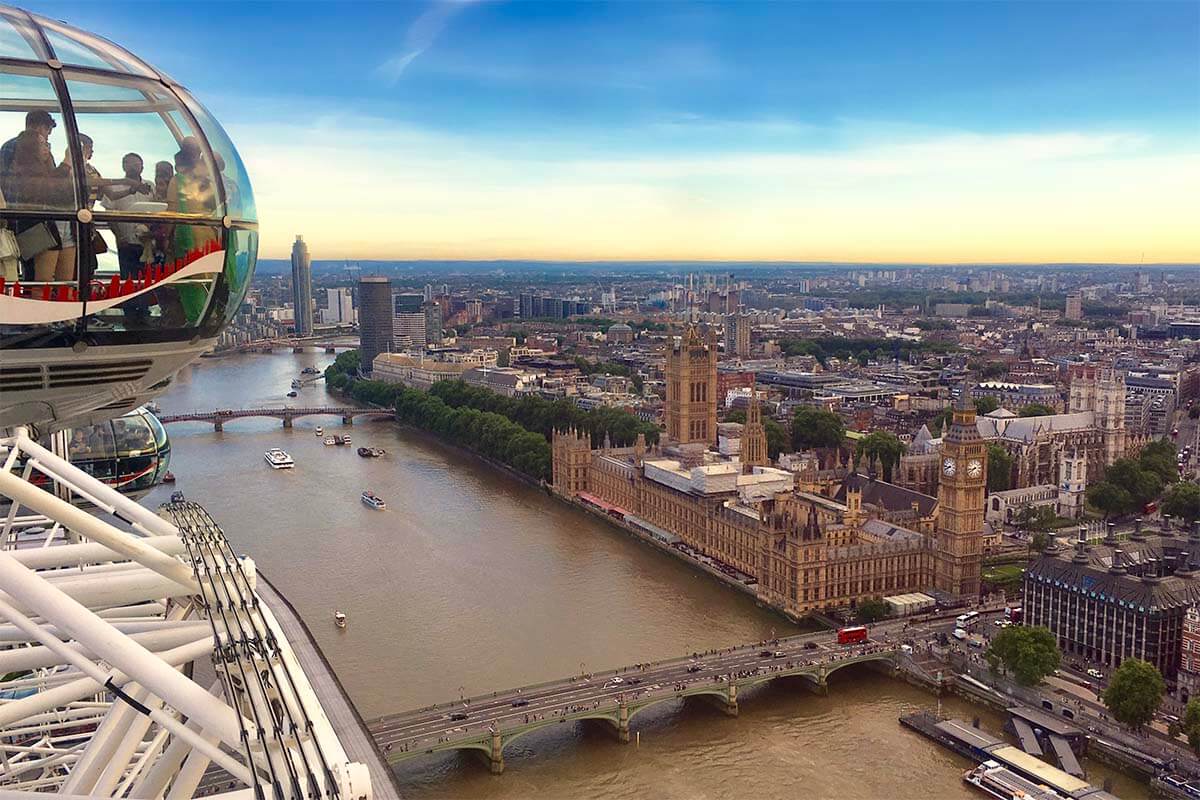
Detailed itineraries for popular destinations in Europe
TIP: We have quite a few very detailed itineraries for several major cities that will help you plan your European trip.
These itineraries focus on ‘the musts’ taking into account the time that you have in each place. You will also find all the information about which tickets you have to prebook and how, etc. Check them out via the links below:
- London:
- Amsterdam:
- Paris:
- Barcelona:
- Seville:
- Madrid:
- Lisbon:
- Rome:
- More popular places in Italy:
- Salzburg:
- … For many more cities, smaller towns, and other popular destinations all over Europe, please see our destinations page.

12. Research Airport Transfers
No matter where you arrive in Europe, the very first thing you’ll need to do is find your way from the airport to your accommodation. Figuring this out on the spot can be very stressful even for seasoned travelers. Plus, you’ll be tired and jet-lagged, and you may have difficulty with the local language too…
So save yourself the stress and do some research before your trip! That way, you know exactly what to expect and what to do after you step out of the plane. Also, remember to do this for every place where you’ll need any kind of transportation/ transfer.
Don’t forget that you’ll have luggage as well. In many major cities, there is luggage storage at the station. But most hotels will keep your bags for free before you can check in or after you check out.
Good to know: In most places in Europe, the train is the best option to get to the city from the airport, but this may not always be the case. Sometimes, you are better off using a shuttle bus or private transfer.
Taxi is usually the most expensive (and often the slowest) option, so we usually tend to use taxis/Uber/Bolt for short distances in the city or when we travel during the quiet times of the day. But this varies a lot depending on the destination. See below for some examples.
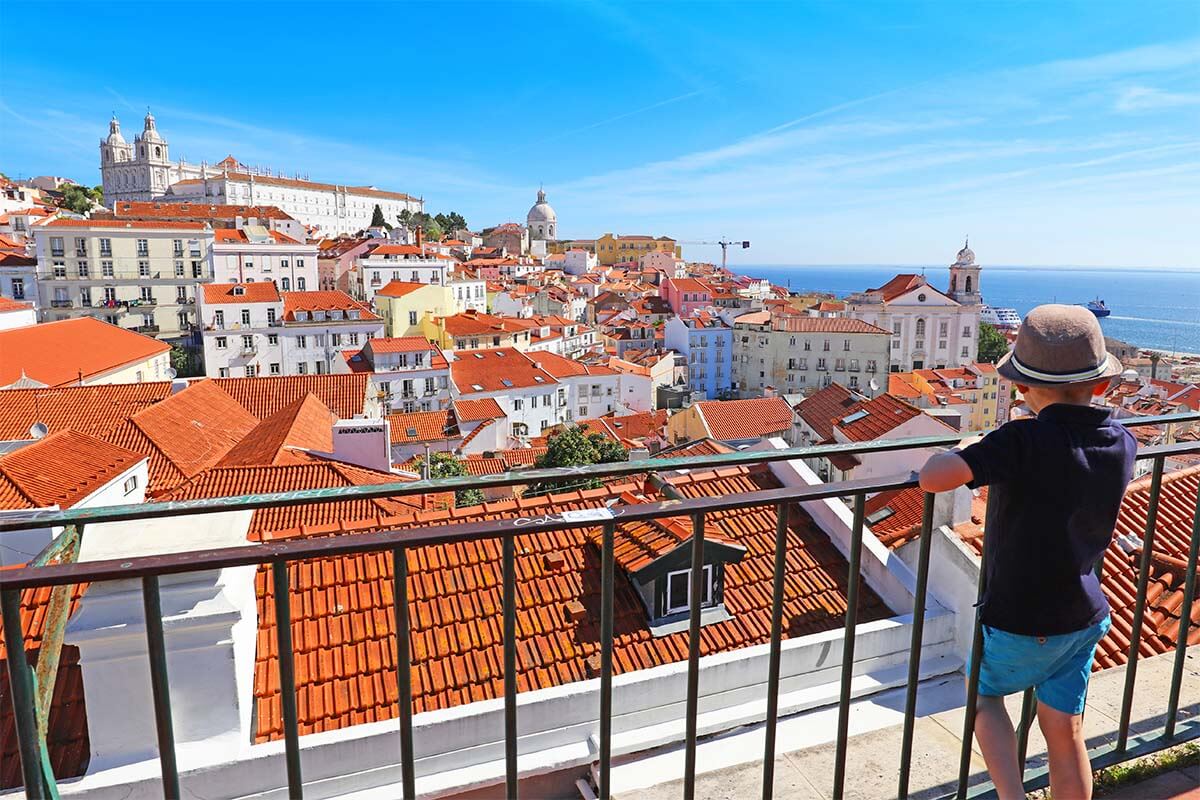
Here is some info for the airport transfers in several popular destinations in Europe:
- Flying to Rome? There are quite a few options to get to the city. Check out our guide on how to get to the city from Rome airports for more information.
- Arriving in Paris by train? The easiest way to get to your hotel is usually by metro (unless your hotel is within walking distance from Paris Nord Station). Uber/taxi is also an option, but you can get stuck in traffic forever.
- Flying to London and need to get to the city center? Depending on where exactly you arrive, see the airport transfers here. If you are coming by train, use the metro to get to your hotel (or book a hotel near St. Pancras International Station).
- In Amsterdam, book a train from the airport to the central station. If you stay near the station, you can easily walk to your hotel.
- In Barcelona, Aerobus is the best way to get from the airport to the city center, or the metro but it can take much longer.
- In Lisbon, a private transfer is by far the best option to reach the city from the airport.
- In Reykjavik, the airport is so far away and the taxis are so expensive that you’re better off using a shuttle. See our guide to Reykjavik airport transfers for all the best options.
- In Brussels, the train is the best way to reach the city from the airport or any other major city nearby. Book a hotel in the center and you can simply walk from the station.
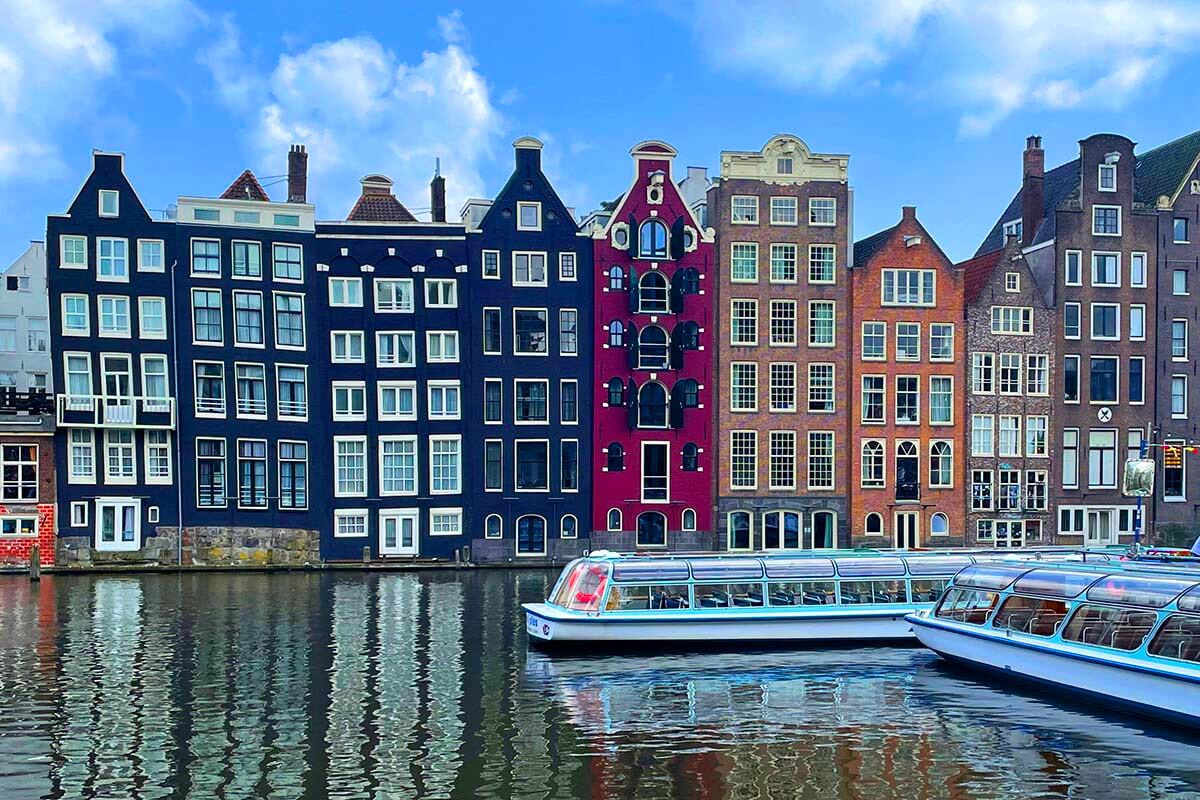
13. Get Travel Insurance
Travel insurance is essential for any trip, so also when traveling to Europe.
There are so many companies and so many different policies that it would be really hard to recommend something specific. Check if your credit card includes any kind of trip insurance and look online for the best options in your area.
Also, be sure to read the small letters so that you know what exactly is covered. Some insurance policies might include trip cancellation insurance, coverage for stolen or lost belongings, etc.
But the most important is getting coverage for all medical emergencies and repatriation (bringing you home due to serious illness or injury, etc.). Money is the last thing you want to be thinking about if you end up in a hospital in a foreign country.
TIP: If you are taking any prescription medicine at home, be sure to pack it with you!
PRO TIP: Make copies of all the important documents and store them in a safe place that you can access from anywhere in the world (Google Drive or email, for example). We always have a copy of our passports, driver’s licenses, insurance and flight info, etc.

14. Share Your Travel Plans
No matter if you are traveling alone or with friends, it’s always a good idea to share your travel plans and detailed itinerary with someone who stays at home. You never know what might happen.
This will also give your family peace of mind since they will know exactly where to find you if need be.
At the same time, don’t share your plans too widely. There is no need to tell the whole world that your house will be empty for a month or to share your exact location on social media channels.
We usually only post on social media after we leave the place and there is a good reason for that. I have heard it on quite a few occasions that people who live in the area show up at someone’s hotel after seeing their posts on Instagram… And this doesn’t only happen to ‘famous’ people or ‘influencers’.
TIP: If traveling solo, be sure that your hotel or accommodation host is aware of your whereabouts, especially if you are exploring outdoors on your own or going out late at night.

Once you have everything planned and settled, it’s time to prepare for your actual trip to Europe. There are quite a few things to think about – here are some of the most important ones:
15. Familiarize Yourself with Money Matters
Decide if you’ll be taking cash with you, how much, and in which currency. Remember that you cannot pay in USD in Europe. And while most EU countries use Euros, it’s not the case everywhere, not even to mention the non-EU countries like Switzerland or the UK.
TIP: If you use an ATM abroad, try to avoid the ones with the Euronet sign on them because the fees and exchange rates are outrageous. Instead, look for ATMs at the local banks. When withdrawing money or using your card to pay, always choose local currency. You’ll usually see two options – local currency and USD amounts. If you choose to pay in USD, you’ll get a much worse exchange rate. So when in doubt, remember LOCAL currency is always the way to go.
While some southern European countries still prefer cash, you can usually pay with your debit – or credit card (or your phone, watch, etc.) pretty much everywhere in Europe. In fact, in many countries (especially in the Nordics), hardly anyone uses cash at all.
TIP: Get a good credit card (ideally, with no foreign transaction fees) and notify your bank about your travel dates and destinations to ensure that your cards will work abroad.
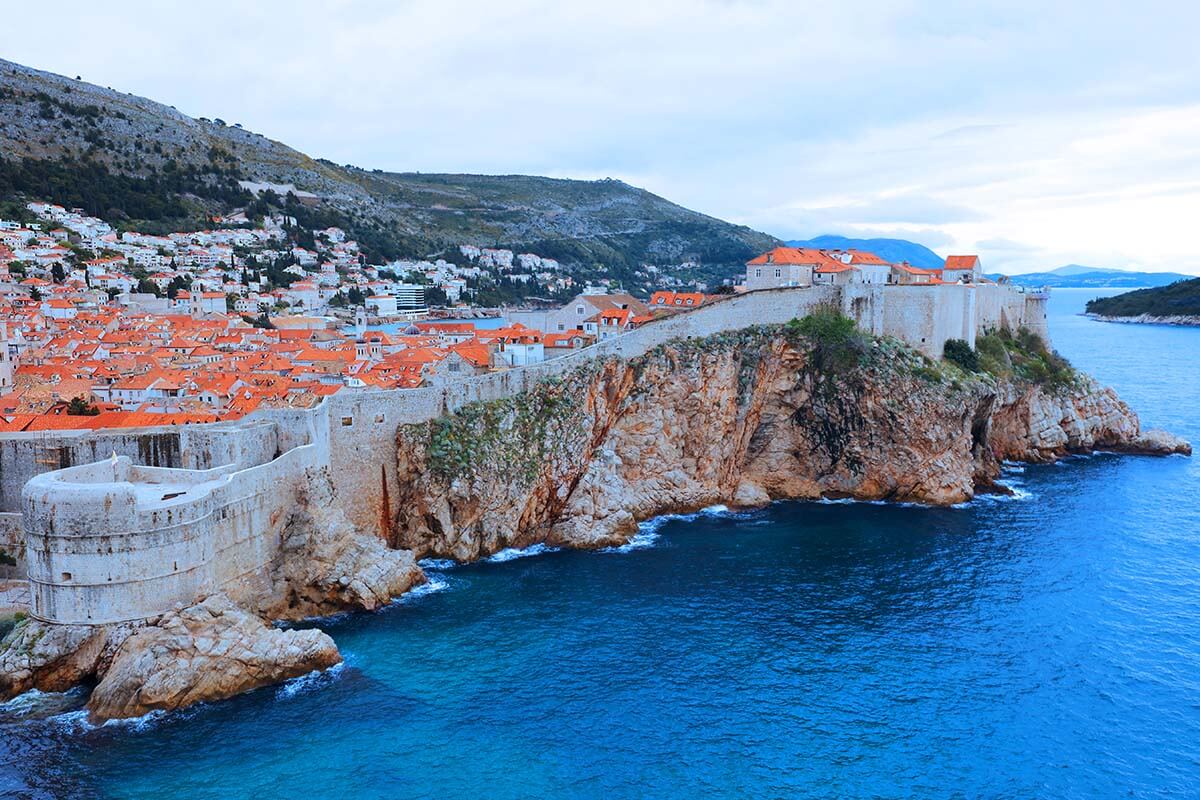
16. Figure Out How to Stay Connected
Most hotels (and many other places) in Europe offer free WiFi these days. So if you don’t absolutely have to stay online the whole day, you can usually do just fine without the internet (it can be very nice to disconnect during your vacation too!).
However, if you want to use data on your phone, keep in mind that using your provider’s data plan might be very expensive. Usually, it’s much cheaper to buy a local SIM card (just make sure that your phone is unlocked), or – easier – you can also buy an eSIM in advance. With an eSim you can simply use your phone without having to worry about changing physical SIM cards.
A pocket WiFi is yet another good option, allowing you to connect several devices to it at the same time. If you are traveling to Europe with a family, it might be a much cheaper solution than getting individual eSIM cards for everyone.
Good to know: The majority of European countries do not have roaming fees between them, so if you buy an eSIM in one country, you’ll be able to use it in other places too. This applies to all the EU countries, but also Iceland, Liechtenstein, and Norway. Some operators also don’t charge extra for roaming in the UK, but you’d have to double-check this depending on which card you buy.

17. Get a Travel Adaptor & Portable Charger
Don’t forget that you will need to charge all your devices when traveling through Europe. Also here, most countries use the same plugs, but there are also exceptions.
Depending on where you’ll be traveling, you will need either a Type C Travel Adapter (most of Europe) and/or a Type G Plug (The United Kingdom).
We recommend travel adapters that have a combination of several outlets including USB or USB-C plugs (like this for example). These adapters often have multiple outlets, allowing you to charge several devices at the same time. This can be very handy because some hotel rooms have a very limited number of sockets.
TIP: We usually pack an adapter like this. The long cable makes it simpler to connect multiple devices without having to worry about the location of the socket (which can sometimes be in the strangest and most difficult-to-reach places).
PRO TIP: Get a small portable charger that you can use to recharge your phones when on the go. If you are planning on using your smartphone for photos, maps, tickets, and similar, the battery will likely be low in a few hours. So make sure that you can always charge your phone when needed.
Of course, an adapter or a power bank alone is not enough. Be sure to pack your charging cables as well!

18. Pack Smartly
When traveling to Europe for the first time, you may be tempted to overpack. Indeed, it may not always look simple especially if you are visiting a mix of colder and warmer destinations, and nature as well as cities.
But remember that you’ll need to carry around whatever you pack. Every time I take a train or visit a bigger city in Europe, I see so many international travelers struggling with their luggage. There are stairs and cobblestones everywhere, and limited baggage spaces on the trains, etc.
Also if you are flying within Europe, you’ll see that many airlines have very strict hand luggage rules and every extra bag will cost you a small fortune.
So try to pack smartly and remember that you’ll likely not use half of what you want to take. Here are some tips on what to pack so that you can travel lightly:
- Pack versatile clothing suitable for different weather conditions and activities. Be sure that you can mix and match all your clothes.
- Pack one jacket (light rain jacket in the summer and warmer insulated jacket in the winter), one or two sweaters, two pairs of pants/shorts/skirts, T-shirts/shirts/blouses, underwear, and socks for a week (you can easily wash and dry some small items in your hotel).
- Be sure that you can layer your clothing if necessary (so that the jacket is big enough to wear a sweater or even two underneath).
- Comfortable walking shoes are a must, as you’ll be exploring on foot a lot. While in the past, Europeans only wore sneakers for sports, nowadays everyone walks around in (fancier) sneakers in the cities too. That said, a lot depends on your specific itinerary. If you are going to the mountains, you may need hiking shoes, and if you are visiting theaters and fancy restaurants, you may want to pack a pair of nicer shoes.
- Pack only essential toiletries; you can always buy extra if you run out or forget something.

Here are a few extra items that we recommend packing:
- If visiting Europe in summer, remember that many churches require modest clothing. It’s always good to pack a light summer scarf – you can use it to cover your shoulders or wear it when it gets colder.
- Pack a small crossbody bag rather than a backpack for exploring the cities. Many attractions don’t allow backpacks inside, no matter how small (you’ll be asked to use the lockers), whereas crossbody bags are usually just fine.
- Pack a small reusable water bottle to reduce plastic waste. Tap water is safe to drink (and delicious) in most places in Europe, plus, many cities have free water fountains where you can refill your bottle.
Don’t worry about ‘looking like a tourist’ when traveling around Europe. You are a tourist after all and a red beret hat in Paris will definitely betray you (but if it makes your trip more fun, who cares). Remember that comfort is more important than trying to blend in. You won’t last long in high heels on cobbled streets…
TIP: Always keep the important documents, electronic devices, or medications in your hand luggage. It can be useful to take a photocopy of your documents and place it in a different bag than the originals (in addition to digital copies as mentioned before).
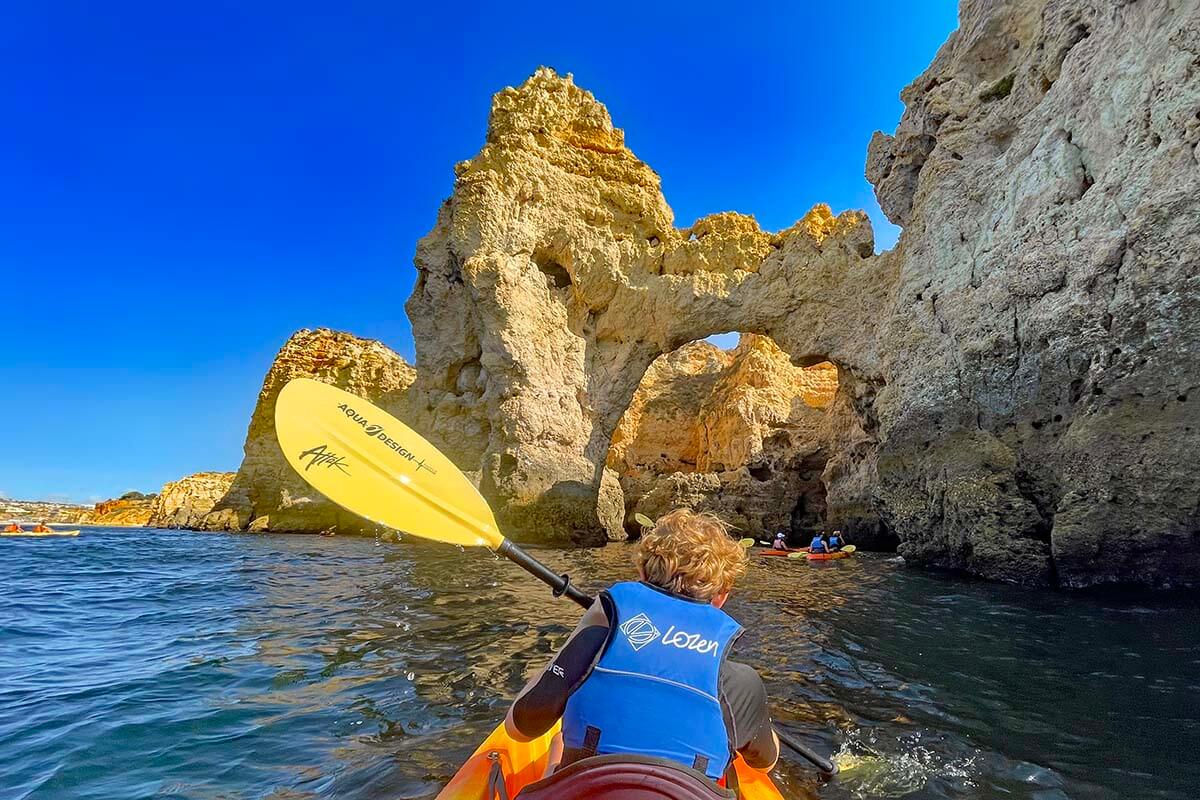
19. Don’t Stress About the Language Barrier
With so many countries and different languages spoken all over Europe, there is not one European that speaks them all. So if we can travel around Europe and get by just perfectly, so can you.
To give you an idea, in our family, we speak 5 European languages fluently and understand another 3-4 quite well, but we still use English a lot when traveling around Europe.
This is because if people in Europe learn a second language, they usually opt for English. Especially younger generations. While in the past it wasn’t easy to communicate in English in many countries, nowadays, it’s hardly even an issue anymore, definitely in the more touristy areas and bigger cities.
And if you run into a situation where you really don’t find anyone who speaks English, remember that a smile goes a long way. Plus, you can always use Google Translate if need be (even offline if you download certain languages in advance).
TIP: Learn a few basic local phrases for each country that you will be visiting. People always appreciate the effort, even if all you can say is ‘bonjour’ or ‘merci’ (‘hello’ and ‘thank you’ in French).
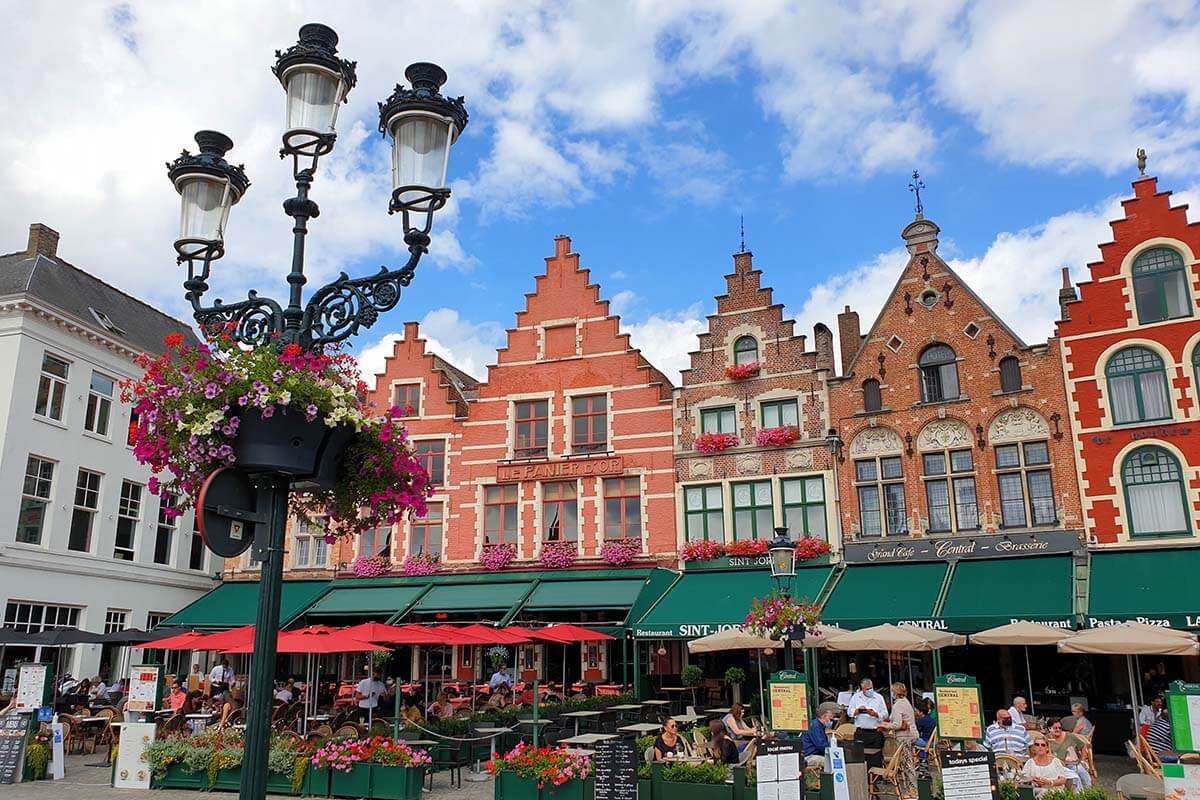
20. Try Local Food!
There is probably no better way to experience a new culture than through its food and dining experiences. So forget about all the food that you are used to at home and embrace European cuisine!
Food is such an essential part of traveling in Europe and your trip will be so much more special if you make the effort to try some local dishes everywhere you visit.
Try galettes (pancakes) or escargots (snails) in France, suppli (a deep-fried rice ball) in Rome, taste a cheese fondue or a raclette in Switzerland and discover countless different types of real Belgian waffles or moules-frites (mussels and French fries) in Brussels…
Every country, every region, and even every city has its own specialties. It’s worth traveling all the way to Europe just for its food!
TIP: One of the best ways to familiarize yourself with local dishes in a new place is by joining a food tour with a local guide. In just a few hours, you’ll get to taste all kinds of traditional specialties of that region coupled with local stories and tips about the place you are visiting. We are fans of food tours and try to do them wherever we can. It’s always so much fun (and the kids love it too!).
We always book food tours via GetYourGuide. Just type in the name of the city + food tour, and you’ll find plenty of choices.
You may also want to read some of our food guides, with tips on where to try these local dishes:

21. Leave Some Room for Spontaneity and Enjoy the Moment!
While planning is extremely important, be sure to leave room for spontaneity as well.
Take some time to sit down for a cup of coffee and do some people-watching, get a gelato, or splurge on a cocktail on a rooftop terrace, and simply enjoy the moment. Take a detour via a nice little street along the way and look for some hidden gems beyond the main attractions.
Remember that some of the best experiences in Europe come from wandering aimlessly, stumbling upon charming neighborhoods, local cafes, markets, or talking to locals.
Often, it’s the little things and unexpected discoveries that make for some of the most memorable travel experiences!
TIP: Talking about getting a bit off the beaten path, here are some of our favorites: hidden gems in London and hidden gems in Rome.

So, these are some of the main steps for planning your first trip to Europe. I hope that our tips and advice will help you plan a truly memorable vacation.
Traveling to Europe for the first time will open up a whole new world for you, with rich history, diverse cultures, and breathtaking landscapes. You are sure to come back home with some incredible experiences and unforgettable memories.
Have a great trip!
TIP: As already mentioned, we live in Europe and have traveled around extensively. On our blog, you can find lots of guides to some of the destinations we visited most recently. Below, we highlighted some articles that you may find useful.
Useful tips for visiting some of the most popular cities in Europe:
- Amsterdam Travel Tips
- Barcelona Travel Tips
- Krakow Travel Tips
- London Travel Tips
- Paris Travel Tips
- Rome Travel Tips
Be sure to also take a look at our travel destinations page for more information and inspiration for a wide variety of destinations that we have written about.
TIP: Did you find this guide helpful? Bookmark this post for later, share it with your friends, and save it to Pinterest to inspire your next trip.








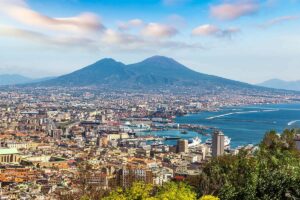
Hi, Jurga. I’m proud I was able to make an itinerary to Italy for me and my family. The Full Suitcase has been such a great help! Thank you so much! I have a question though… when it involves more than one country, it can be very difficult to come up with a most favorable itinerary, so in that case, would you care to suggest what countries can we visit in at least in 10 days and 14 days at most which includes Switzerland and Italy? What I need is what other country or countries other than those two which can still be included, and in an economical way like you always suggest.
Thank you in advance for the response.
Hi Lisette, I’m so glad to hear that my Italy guides helped you plan your trip – that makes me really happy to read! And congrats on putting together your own itinerary, I know it’s not always easy.
I guess you realize by now that you could easily spend another 10-14 days in Italy and never get bored. The same with Switzerland – see our recommended 10-day Switzerland itinerary for first trip, which just scratches the surface of what this beautiful country has to offer.
That said, if you absolutely want to visit one more country, pick either France (e.g. Alsace region), Austria (Salzburg or somewhere in Tyrol), or Germany (e.g. Munich area, Lake Constance, Bavaria).
A lot also depends on when and how you travel. If you stick to public transport and tours, it’s easier to focus on bigger cities. For example, an easy way to add France to a Switzerland itinerary is by booking a day tour from Geneva to Chamonix, and a half-day tour to Annecy. This is just one example – the options are practically endless. Try to narrow it down first to what exactly you want to see in Italy and Switzerland and then see if there’s any time left for more.
Good luck!
We are thinking of travelling in Hungary, Budapest and Austria. Do you have any travel tips for those destinations?
Thanks,
Pam
Hi Pam, while we have been to Budapest, Vienna, and quite a few other places in those countries, most of those trips were way before I had this blog.
That said, we have quite a few recent articles about a variety of mountain destinations in Austria, as well as Salzburg. Please see here.
I haven’t been into Europe, but this will really help me and other people who will travel for the first time in Europe. I will surely keep this in mind. Thank you for the information!
Thanks for reading and hope you get to visit Europe very soon!
Thank you for this write up. Me and my partner are making our second European trip and we cant wait to spend time. Any tips is especially welcome and this article has been so informative and fun. I’ve bookmarked this for further reading.
Glad to hear this, Neil. If you have any specific questions for destinations that we feature on our blog, feel free to leave a comment under a related article and we’ll try to help.
Enjoy Europe!